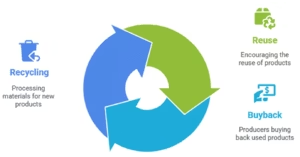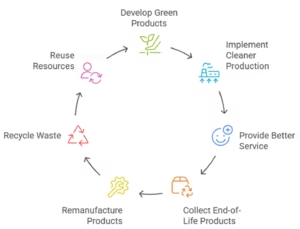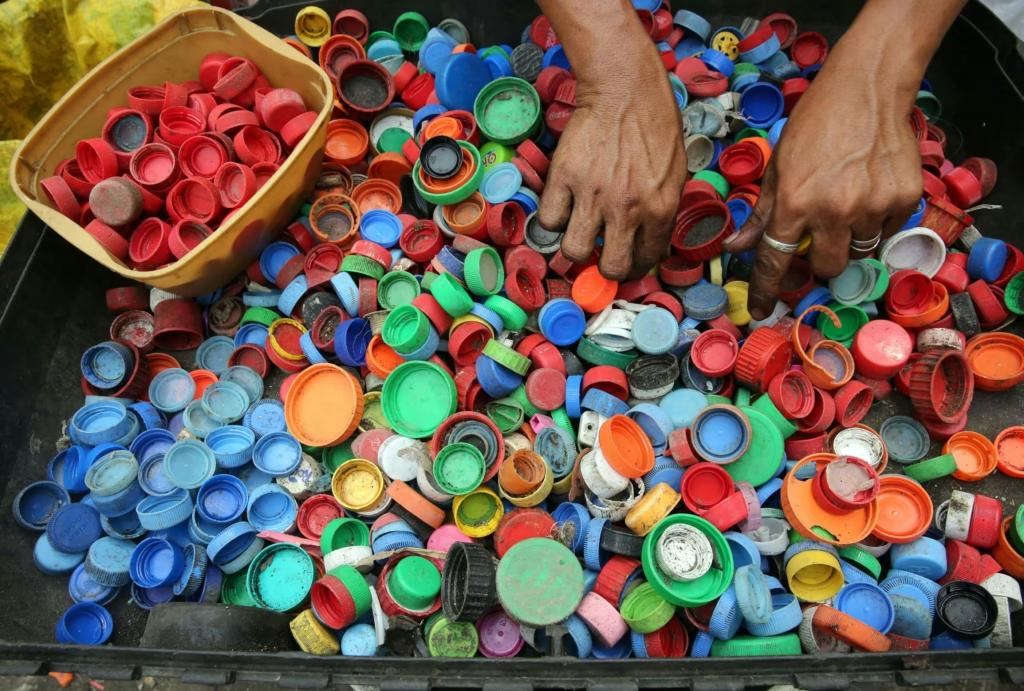Extended Producer Responsibility (EPR) is a policy mechanism that makes manufacturers, not taxpayers, responsible for the full lifecycle of their products. By shifting end‑of‑life costs and logistics onto producers, EPR accelerates the transition from a “take‑make‑dispose” economy to a circular economy, driving eco‑design, recycling, and waste reduction.

What is EPR?
At its core, EPR is built on the polluter‑pays principle. Instead of municipalities footing the bill for collection, sorting, and disposal, producers fund and manage these activities. Under EPR:
- Financial Responsibility: Producers cover waste management costs.
- Physical Responsibility: Producers organize take‑back, reuse, and recycling programs via Producer Responsibility Organisations (PROs).
Global municipal waste is forecast to hit 3.4 billion tons by 2050, yet only 20% of landfill‑bound items are recycled. EPR tackles this by:
- Incentivizing Eco‑Design: Manufacturers design products for durability, disassembly, and recyclability.
- Reducing Public Costs: Shifts billions in waste‑management expenses from taxpayers to producers.
- Boosting Recycling Rates: Ensures stable funding for end‑of‑life programs.
- Fighting Plastic Pollution: Provides dedicated resources for collection and processing of hard‑to‑recycle materials.
EPR & the Circular Economy
Historically, product design followed a “take-make-waste” linear model. The focus was on creating products that met customer needs and wants, with little consideration for what happened at the end of the product’s life. Retrofitting existing products to be greener has limited effectiveness. EPR encourages and requires a shift away from this model towards a fully circular economy and supply chain. This means products must be initially designed with circularity in mind. Circular design is the practice of developing products and packaging specifically crafted for easy recycling, reuse, or repurposing. Product designers, being creative and innovative, are vital in bringing these sustainability ideas to life.

Designing for circularity means building products with:
- Modularity for easy repair
- Disassemblability for component recovery
- Recycled Content to reduce virgin materials
How EPR Schemes Operate
Producers often organize themselves collectively to meet their EPR obligations within the framework of Producer Responsibility Organisations (PROs). These can be non-profit or for-profit entities whose mission is to address the challenges of reduction, reuse, and recycling within the circular economy. PROs work in conjunction with all stakeholders in the value chain, including brand owners, retailers, recyclers, and municipalities. PROs coordinate:
- Waste Collection & Sorting
- Recycling & Recovery Operations
- Public Awareness Campaigns
- Eco‑Design R&D
- Fee Collection & Management
Business Benefits of EPR
Implementing EPR and circular design delivers:
- Market Differentiation: Eco‑friendly products command premium pricing and loyal customers.
- Regulatory Compliance: Meets tightening global waste regulations (EU’s Packaging EPR, India’s Plastic Waste Rules).
- Cost Predictability: Stable funding for waste management vs. unpredictable public budgets.
- Innovation Catalyst: Drives R&D in materials, packaging, and reverse‑logistics.
- ESG Performance: Strengthens environmental, social, and governance credentials for investors and partners.
- Social benefits: EPR also plays a social role, offering opportunities to integrate informal workers in the waste sector, improving their working conditions and livelihoods. It aligns with increasing demands for companies to demonstrate awareness of their environmental and societal role.
EPR as a Global Dynamic
EPR is recognized internationally as a catalyst for solutions to waste management challenges, particularly for packaging. It is seen as a political key to circularity and is being advocated for inclusion in the international treaty on plastics. This model is adaptable to each national context and involves the participation of all stakeholders. Many countries across Latin America, the Caribbean, Africa, Asia, Oceania, and North America have implemented or are in the process of implementing EPR systems for various sectors, including packaging and e-waste.
EPR is more than waste regulation—it’s a strategic lever for sustainable innovation, cost management, and market leadership. By embracing EPR principles and partnering with PROs, businesses close the loop on materials, meet consumer and regulatory demands, and pave the way for a circular economy.
Click here to learn more about circular economy.

